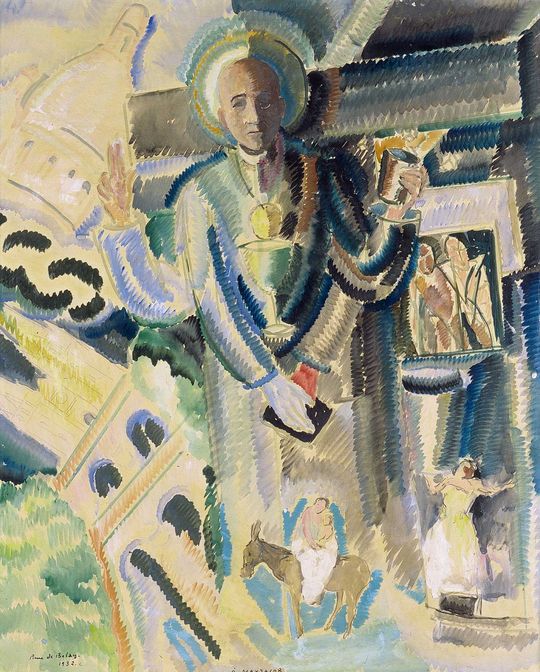Prophetic Portrait of Max Jacob
1932

Watercolor on paper
D. 56-2-3
Allocated by the Musée national d'art moderne (Paris) in 1956.
H. 55 cm - L. 45,5 cm
Pierre de Belay, who has witnessed the life of his elder for a quarter of a century, tries to summarize some aspects of it. As a Hindu deity with multiple arms, like a saint on his cross, Max Jacob is surrounded by various evocations of his life: the Basilica of the Sacred Heart in Montmartre top left, a cubist painting with the Picasso on an easel, a Scene of ballet in the lower right illustrating the Parisian life, an Escape in Egypt reference perhaps to his departure for Saint-Benoit-sur-Loire with the towers of the basilica of this abbey (bottom left).
Prophetic Portrait of Max Jacob
1932

Watercolor on paper
D. 56-2-3
Allocated by the Musée national d'art moderne (Paris) in 1956.
H. 55 cm - L. 45,5 cm
Pierre de Belay, who has witnessed the life of his elder for a quarter of a century, tries to summarize some aspects of it. As a Hindu deity with multiple arms, like a saint on his cross, Max Jacob is surrounded by various evocations of his life: the Basilica of the Sacred Heart in Montmartre top left, a cubist painting with the Picasso on an easel, a Scene of ballet in the lower right illustrating the Parisian life, an Escape in Egypt reference perhaps to his departure for Saint-Benoit-sur-Loire with the towers of the basilica of this abbey (bottom left).
